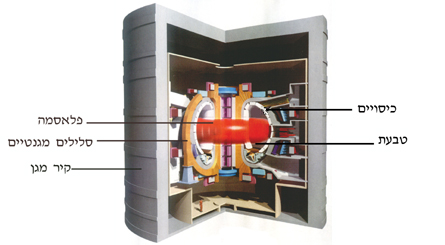Scientists hope to build an experimental melting pot that draws its inspiration from the stars.

ITER - this is how it works
The hunter-armed villain from the movie Spider-Man 2, Doc Ock, has almost succeeded where thousands of scientists have failed and 50 years of research have so far yielded no fruit: building a nuclear fusion reactor. However, the righteous scientists may yet regain their dignity. A multinational team is set to begin building the international experimental thermonuclear reactor known as ITER this year. The purpose of the project is to demonstrate that an almost unlimited amount of electricity can be produced through fusion, without creating the dangerous radioactive waste that characterizes traditional nuclear reactors, which are based on fission.
Fusion is the source of energy for the sun and stars, it is the driving force behind almost every star in the universe. Through ITER, the scientists seek to reproduce the process on Earth by heating hydrogen to a temperature of 100 million degrees Celsius. In this inferno, the hydrogen ions are crushed together, fuse into a larger ion - helium - and release energy.
Although scientists have already succeeded in building fusion reactors in the past, none of them produced more energy than it consumed. If all goes well, ITER will change that. It is a larger and more powerful reactor, which scientists hope will be able to produce 500 megawatts of electricity from a consumption of 50 megawatts. The fuel - an isotope of heavy hydrogen - is extracted from water, and the low amount of radioactive waste that is created reaches a safe level within a few decades. The radioactive waste produced by fission reactors, however, remains dangerous for thousands of years.
The project will last 10 years and cost 6 billion dollars in total. The goal is to generate electricity through fusion in the middle of this century. There is only one problem: an agreement has not yet been reached between the countries participating in the ITER project - the European Union, the USA, South Korea, Japan, China and Russia - where the reactor will be built. In the last year, the project was split between sites in France and Japan (China and Russia prefer France while the USA and South Korea support Japan) and so far they have not been able to bridge the gaps in negotiations. This is not a promising opening for a joint project that is second in scope only to the International Space Station.

The melting process
This is how an artificial star is made:
plasma
The reactor melts hydrogen isotopes through mass burning of ions and electrons. At a temperature of 100 million degrees Celsius the plasma is hotter than the sun. It is surrounded by two magnetic fields: one field is created by the superconducting magnets, and the second field is created by the charge flowing in the ring.
Ring
The plasma is contained in a 5.4 meter wide stainless steel container.
covers
Stainless steel plates, coated with beryllium, wrap around the ring and absorb the neutrons and heat that the fusion process spreads.
Superconducting magnetic coils
43 electromagnets, with a total weight of 11,200 tons, surround the ring and keep the plasma in place in a field that is a thousand times stronger than that of the Earth. The magnets are placed in a huge cryostat and cooled to a temperature of 270 degrees Celsius below zero with the help of helium, in order to allow the charge to move with zero resistance.
protective wall
A two meter thick concrete shell surrounds the entire reactor and blocks the remaining neutrons in order to protect the workers and the external equipment.
